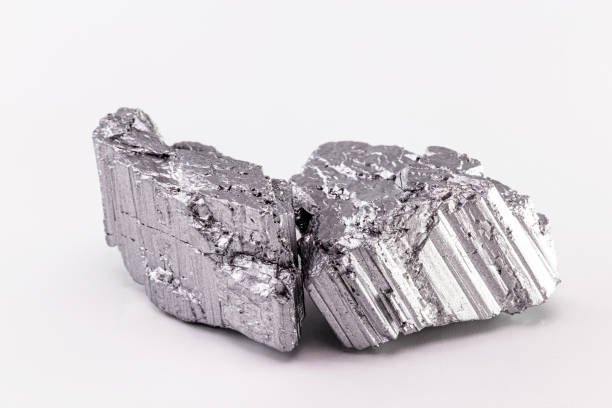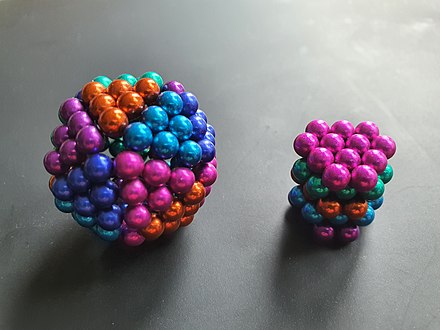How The Neodymium Magnet Became A Belt And Road Initiative Flashpoint

Op/Ed by Chris Devonshire-Ellis
There is plenty of Neodymium to go around – so why is the United States so jumpy about its supply chains?
The United States has just released its ‘New Supply Chain Strike Force‘ aimed at curtailing Chinese dominance in specific supply chains, and especially those that affect component parts critical to next-generation manufacturing. One of those is the supply of Neodymium Magnets, and the story behind what these are and why they became so important is an interesting study into the development of supply chains and the component parts within them.
What Is A Neodymium Magnet?
A Neodymium magnet (also known as NdFeB, NIB or Neo magnet) is the most widely used type of rare-earth magnet. It is a permanently magnetic, and is made from an alloy of Neodymium, Iron and Boron, and forms a tetragonal crystalline structure. It was developed independently in 1984 by the United States General Motors, and Japan’s Sumitomo Special Metals. These are the strongest type of permanent magnet commercially available and have replaced other types of magnets in many applications in modern products that require strong permanent magnets, such as electric motors, cordless tools, hard disk drives and magnetic fasteners. Consequently, they are a valuable part of new EV technologies, wind turbines and automobiles on a global basis as well as for the rapidly developing computing and IT industries, and without ensuring supplies, manufacturers cannot develop these industries. The problem is that the main component rare earth required to make them, Neodymium, although being fairly common, is commercially mined mostly in China. That means that Chinese manufacturers have become a dominant force in neodymium magnet production, based on their control of much of the world’s rare-earth mines.
Some of the concern has been an overreaction. Because of neodymium’s role in permanent magnets used for direct-drive wind turbines, it has been argued that neodymium will be one of the main objects of geopolitical competition in a world running on renewable energy. This perspective has been criticized for failing to recognize that most wind turbines do not use permanent magnets, and for underestimating the power of economic incentives for expanded production.
Supply Chain Concerns and Alternative Neodymium Supplies
In order to cease its dependence on Chinese supplies, the United States needs to find alternative sources. Although neodymium is classed as a rare-earth element, it is no rarer than Cobalt, Nickel or Copper, and is widely distributed in the Earth’s crust.

Neodymium in Rare Earth form
Although the main mining areas are in China, others are also found in the United States, Brazil, India, Sri Lanka, and Australia. Global reserves of neodymium are estimated at about eight million tonnes, and it is the second most abundant rare earth after Cerium. According to the US Geological Survey, Greenland holds the largest reserves of undeveloped rare-earth deposits, particularly Neodymium and this is one reason that ex-US President Donald Trump somewhat notoriously offered to buy the land from Denmark.
One of the political issues has been that the Chinese government has on occasion imposed strategic material controls on neodymium, causing large fluctuations in prices, sometimes as a strategic way of punishing Japanese companies during political spats between Beijing and Tokyo. Although there has been Japanese research into creating permanent magnets with fewer rare-earth metals; to date, they have been unable to eliminate the need for neodymium.
There are additional environmental concerns when mining Neodymium and other rare earths, due to the release of radioactive material during the extraction process – another political difficulty when seeking alternative supplies. Neodymium dust is explosive, while the element itself is toxic causing liver and lung damage if inhaled. The Buckyballs line of toys, which featured Neodymium magnets, resulted in 1,700 children being admitted to hospital in the United States after they were accidently ingested.

Buckyballs Neodymium Magnet Toys
Clearly, if the United States is able to use Neodymium for children’s toys, the supplies of the rare earth cannot be so difficult to obtain, and the element does appear to be common. The US supply chain issue is therefore not just about China dominating the market, it is about environmental standards and persuading other countries to manufacture it – it appears apparent that while the US wishes to wean itself off the Chinese controlled production of Neodymium, neither does it wish to manufacture the product itself.
This then, becomes the new Belt and Road Initiative, and US-China supply chain conundrum – how to secure supplies of a much-needed, yet toxic component? Is it really China’s fault that the United States itself doesn’t want to manufacture it? The answers will lie to some extent in Washington’s newfound admiration of India and Brazil, and concerns about China’s influence in Sri Lanka, where alternative supplies are to be found.
About Us
Silk Road Briefing is written by Dezan Shira & Associates. The firm has 28 offices throughout Asia, and assists foreign investors into the region. For strategic advisory and business intelligence issues please contact the firm at silkroad@dezshira.com or visit www.dezshira.com





